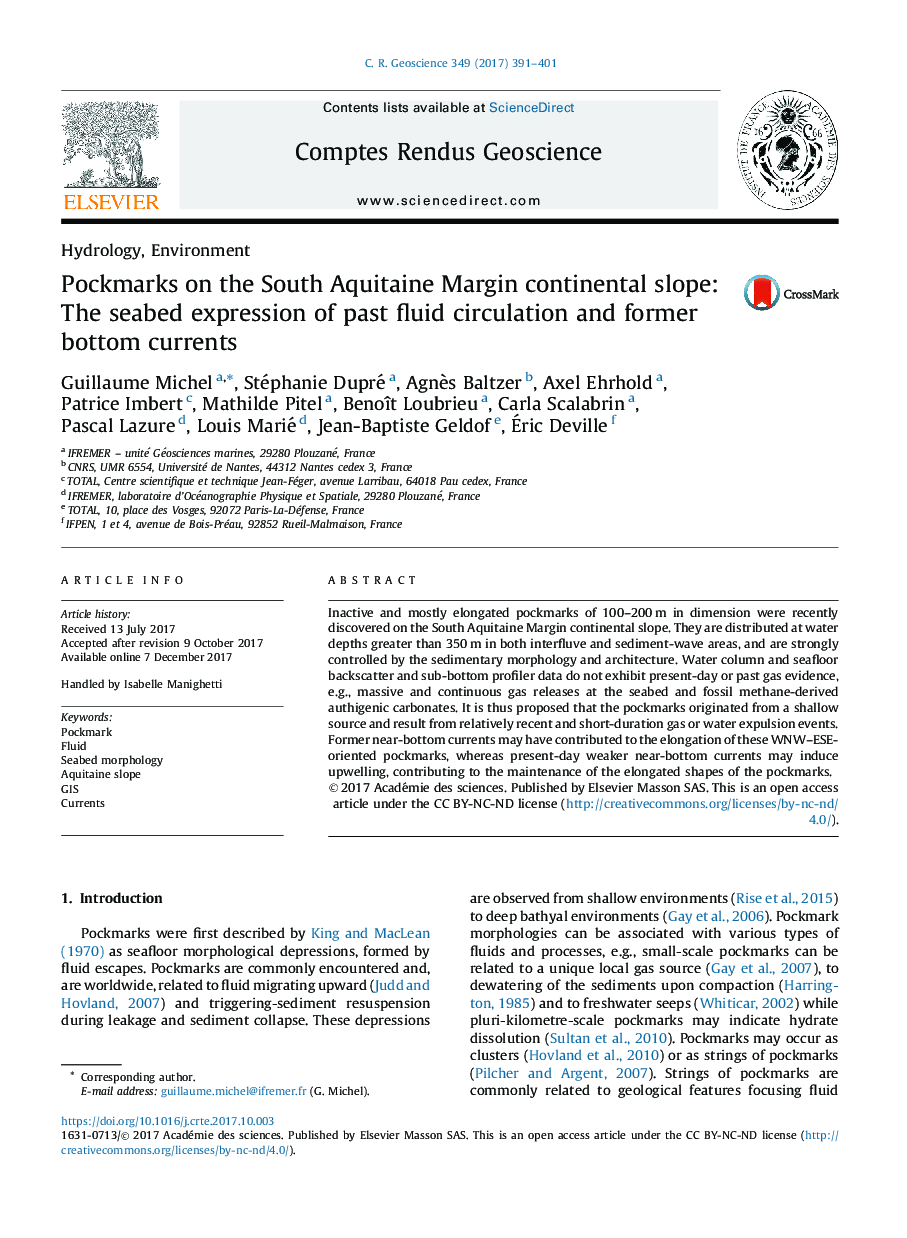| Article ID | Journal | Published Year | Pages | File Type |
|---|---|---|---|---|
| 8867371 | Comptes Rendus Geoscience | 2017 | 11 Pages |
Abstract
Inactive and mostly elongated pockmarks of 100-200Â m in dimension were recently discovered on the South Aquitaine Margin continental slope. They are distributed at water depths greater than 350Â m in both interfluve and sediment-wave areas, and are strongly controlled by the sedimentary morphology and architecture. Water column and seafloor backscatter and sub-bottom profiler data do not exhibit present-day or past gas evidence, e.g., massive and continuous gas releases at the seabed and fossil methane-derived authigenic carbonates. It is thus proposed that the pockmarks originated from a shallow source and result from relatively recent and short-duration gas or water expulsion events. Former near-bottom currents may have contributed to the elongation of these WNW-ESE-oriented pockmarks, whereas present-day weaker near-bottom currents may induce upwelling, contributing to the maintenance of the elongated shapes of the pockmarks.
Related Topics
Physical Sciences and Engineering
Earth and Planetary Sciences
Earth and Planetary Sciences (General)
Authors
Guillaume Michel, Stéphanie Dupré, Agnès Baltzer, Axel Ehrhold, Patrice Imbert, Mathilde Pitel, Benoît Loubrieu, Carla Scalabrin, Pascal Lazure, Louis Marié, Jean-Baptiste Geldof, Ãric Deville,
